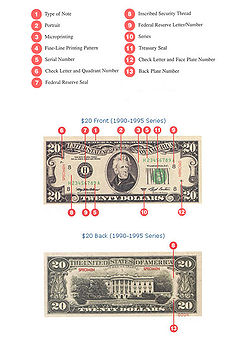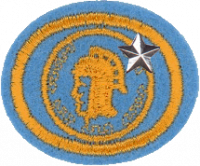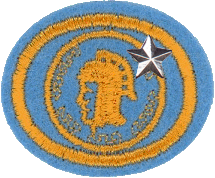AY Honor Currency - Advanced Answer Key for United States used by General Conference
For tips and instruction see Currency.
Suggestions:
- Golden Dollar
- John F. Kennedy
- Washington Quarter
- Roosevelt dime
- Lincoln cent
- Susan B. Anthony dollar
- US Bicentennial Coins
- Presidential Coin Act and First Spouse Program
United States of America (Law)
- Manufacturing counterfeit United States currency or altering genuine currency to increase its value is a violation of Title 18, Section 471 of the United States Code and is punishable by a fine or imprisonment for up to 15 years, or both.
- Possession of counterfeit United States obligations with fraudulent intent is a violation of Title 18, Section 472 of the United States Code and is punishable by a fine or imprisonment for up to 15 years, or both.
- Anyone who manufactures a counterfeit U.S. coin in any denomination above five cents is subject to the same penalties as all other counterfeiters. Anyone who alters a genuine coin to increase its numismatic value is in violation of Title 18, Section 331 of the United States Code, which is punishable by a fine or imprisonment for up to five years, or both.
- Forging, altering, or trafficking in United States Government checks, bonds or other obligations is a violation of Title 18, Section 510 of the United States Code and is punishable by a fine or imprisonment for up to 10 years, or both.
- Printed reproductions, including photographs of paper currency, checks, bonds, postage stamps, revenue stamps, and securities of the United States and foreign governments (except under the conditions previously listed) are violations of Title 18, Section 474 of the United States Code. Violations are punishable by a fine or imprisonment for up to 15 years, or both.
Anti-counterfeiting measures
Selection from Wikipedia

Traditionally, anti-counterfeiting measures involved including fine detail with raised intaglio printing on bills which would allow non-experts to easily spot forgeries. On coins, milled or reeded (marked with parallel grooves) edges are used to show that none of the valuable metal has been scraped off. This detects the shaving or clipping (paring off) of the rim of the coin. However, it does not detect sweating, or shaking coins in a bag and collecting the resulting dust. Since this technique removes a smaller amount, it is primarily used on the most valuable coins, such as gold. In early paper money in Colonial North America, one creative means of deterring counterfeiters was to print the impression of a leaf in the bill. Since the patterns found in a leaf were unique and complex, they were nearly impossible to reproduce.[1]
In the late twentieth century advances in computer and photocopy technology made it possible for people without sophisticated training to easily copy currency. In response, national engraving bureaus began to include new more sophisticated anti-counterfeiting systems such as holograms, multi-colored bills, embedded devices such as strips, microprinting and inks whose colors changed depending on the angle of the light, and the use of design features such as the "EURion constellation" which disables modern photocopiers. Software programs such as Adobe Photoshop have been modified by their manufacturers to obstruct manipulation of scanned images of banknotes.& There also exist patches to counteract these measures.
For U.S. currency, anti-counterfeiting milestones are as follows:
- 1996 $100 bill gets a new design with a larger portrait
- 1997 $50 bill copies the design used above
- 1998 $20 bill copies the design used above
- 2000 $10 bill and $5 bill copies the design used above
- 2003 $20 bill gets a new design with no oval around Andrew Jackson's portrait and more colors
- 2004 $50 bill copies the design used above
- 2006 $10 bill copies the design used above
The Treasury had made no plans to redesign the $5 bill using colors, but recently reversed its decision, after learning some counterfeiters were bleaching the ink off the bills and printing them as $100 bills. It is not known when the $100 bill will be redesigned in this format, but the new $10 bill (the design of which was revealed in late 2005) entered circulation on March 2, 2006. The $1 bill and $2 bill are seen by most counterfeiters as having too low of a value to counterfeit, and so they have not been redesigned as frequently as higher denominations.
In the 1980s counterfeiting in the Republic of Ireland twice resulted in sudden changes in official documents: in November 1984 the £1 postage stamp, also used on savings cards for paying television licences and telephone bills, was invalidated and replaced by another design at a few days' notice, because of widespread counterfeiting. Later, the £20 Central Bank of Ireland Series B banknote was rapidly replaced because of what the Finance Minister described as "the involuntary privatisation of banknote printing".
In the 1990s, the portrait of Chairman Mao Zedong was placed on the banknotes of the People's Republic of China to combat counterfeiting, as he was recognised better than the generic designs on the renminbi notes.
In Australia, the original paper decimal currency banknotes introduced in 1966 were eventually replaced with new designs printed on clear polyester film which allowed them to have "see through" sections that are almost impossible to duplicate with a photocopier.
4
- a. Level of expertise of members as demonstrated by presentations and dialogues.
- b. Average general age of attendees.
- c. Ideas which might help the club extend its collector interest to a wider audience.
- d. How newcomer friendly is the organization.
- e. Suggestions on how these people might be reached with the gospel through a manner which they would find attractive.
5
Requirements 7 & 8 reproduced below for simplicity
Requirement 7. Collect and mount a type set of coins from your country of
any date currently being minted or in circulation. Proof,
commemorative, rare, silver, or expensive coins are not
needed. In your collection:
a. Possess at least one coin from each mint in the type set.
b. Locate and identify the mint mark (if any) on each coin.
c. Locate and identify the initials (if any) of each coin's
designer(s).
Requirement 8. Do two of the following:
a. Make enlarged drawings of both sides of ten different
denominations or forms of coins for your country no
longer in circulation.
b. Collect, identify, and mount 25 different foreign coins.
No two coins alike.
c. Collect and mount a type set of coins from your country
minted during the 20th Century.
d. Collect and mount a date set of series of coins for your
country beginning with your birth year. (Commemorative,
gold, proof, expensive, or rare coins need not be included.)
6
Requirement 1 reproduced below for simplicity
Requirement 1. Relate briefly the story of barter, showing three reasons why money
came into being and naming at least ten strange forms of money used
in place of coins or currency.
References


